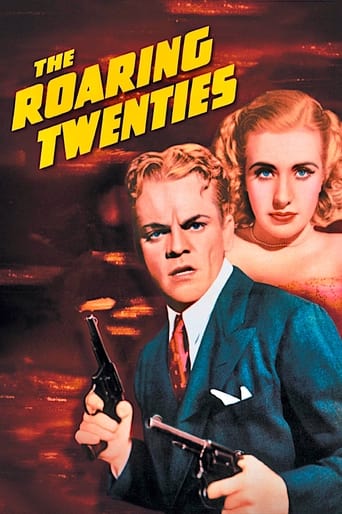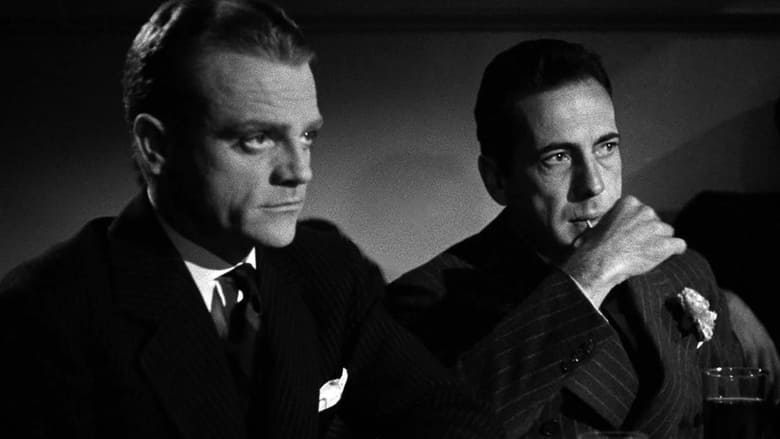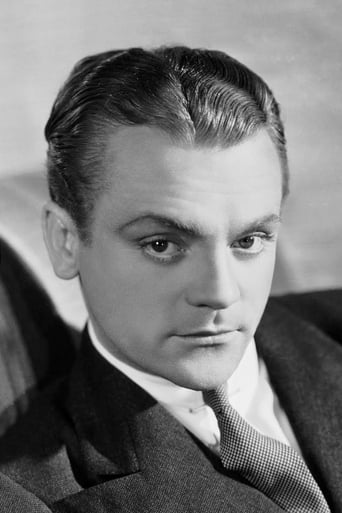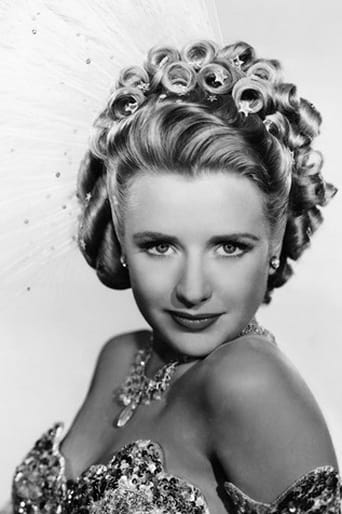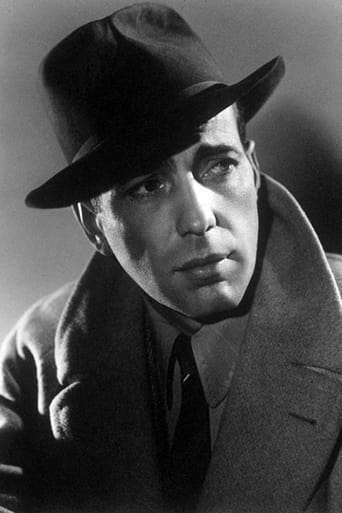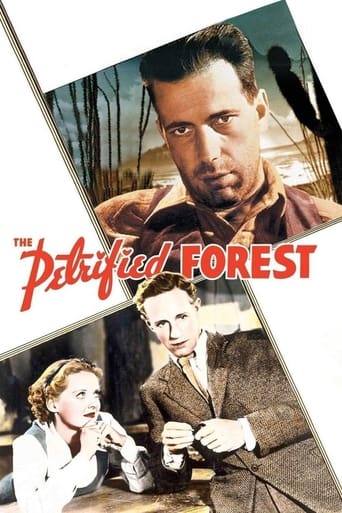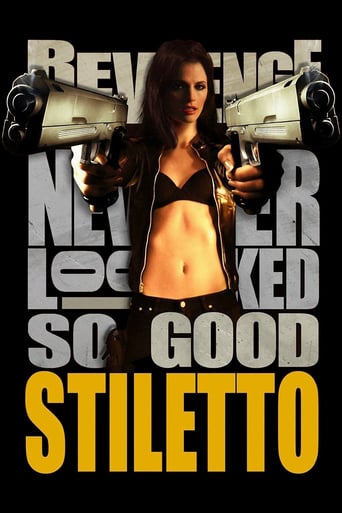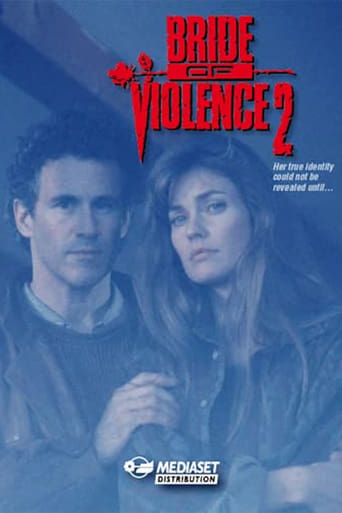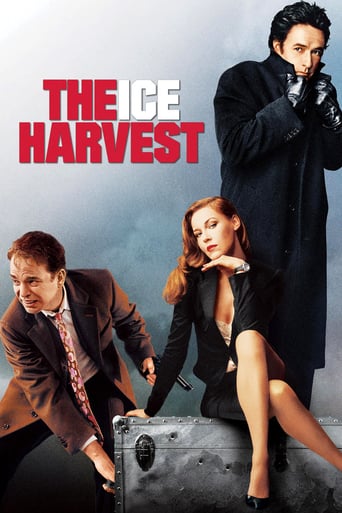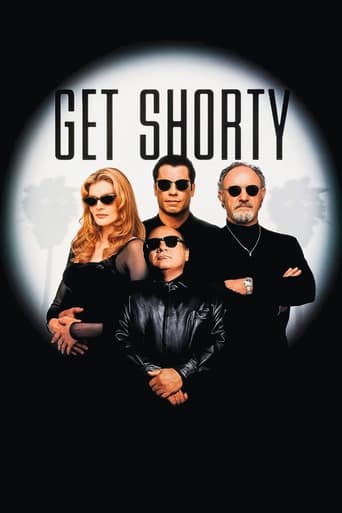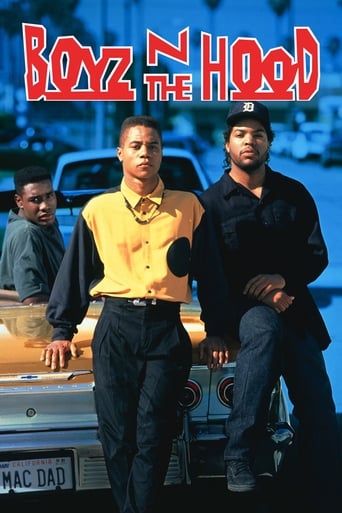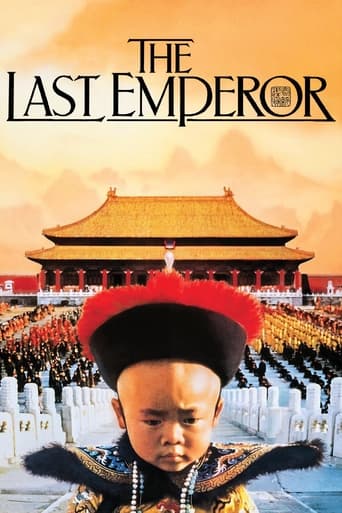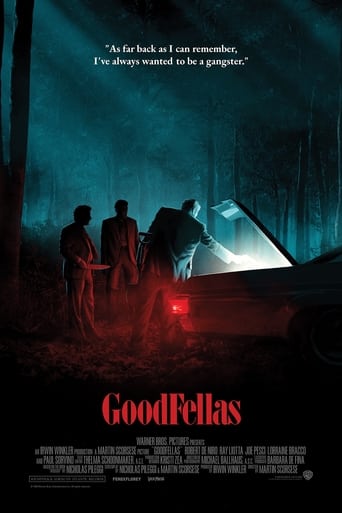The Roaring Twenties (1939)
After World War I, Armistice Lloyd Hart goes back to practice law, former saloon keeper George Hally turns to bootlegging, and out-of-work Eddie Bartlett becomes a cab driver. Eddie builds a fleet of cabs through delivery of bootleg liquor and hires Lloyd as his lawyer. George becomes Eddie's partner and the rackets flourish until love and rivalry interfere.
Watch Trailer
Cast


Similar titles
Reviews
Very very predictable, including the post credit scene !!!
Memorable, crazy movie
It's easily one of the freshest, sharpest and most enjoyable films of this year.
Blistering performances.
What's not to like all you classic movie lover fans and for those that remember and have followed Cagney and Bogart? Enjoyable romp and glimpse of the prohibition days when anyone with guts could make a fortune in a short amount of time. Of course what happens is that others see how easy it is and instead of doing their own, they want a piece of your operation. If they cant get that, they want you dead so they can take over. That's the catch to get rich quick at least in pedaling anything illegal. The most brutal guy makes it to the top, feeds his ego and then comes crashing down as this movie is good at pointing out. Good support acting for the two lead players that adds to our fond memories of the gangster films that dominated for years at the different studios. Warner Brothers studio held the lead and when that familiar logo with the little music came on, you knew some really good entertainment was forthcoming. That's how good Warner brothers became at what they did. Cagney was known for his fast talking/replying to all situations thrown at him and was well liked both on and off screen. Good movie to eat dinner or a sandwich by, tasty drink and of course a snack or two. Its nice to be able to watch this and travel back in time and get to see why they called it "roaring" twenties.
In this picture we can see the development of Eddie Bartlett (James Cagney) who returns to the United States after WW1 to find himself unemployed. After a few times of trying, he accidentally bumps into the booze traffic. He ends up in jail after being caught by the cops while delivering an unknown package who turned to be booze. After serving some time in jail he starts his clandestine booze traffic business and gets to the top of society thanks to the prohibition which allows to traffic booze at a high price. After prohibition is terminated and '29 crisis hit the world, he started once again from the bottom but this time he can't get his life straight.Lesson of the movie is that it's not about getting to the top but to stay there. How the world turns and how you're prepared for it.
THE ROARING TWENTIES (Warner Brothers, 1939), directed by Raoul Walsh, is a nostalgic look back into an era recollected by New York City columnist, Mark Hellinger. Taken from his original story, Hellinger introduces THE ROARING TWENTIES with this forward message: "It may come to past that at some distant date, we will be confronted with another period similar to the one depicted in this photo-play. If that happens, I pray that the events, as dramatized here, will be remembered. In this film the characters are composites of people I knew and the situations are those that actually occurred. Bitter or sweet, most memories become precious as the years move one." The story gets underway as Hellinger's treasured memories are presented in documentary style with voice-over narration by John Deering depicting the decade fondly known as "The Roaring Twenties."1918: The Great War (World War I), Eddie Bartlett (James Cagney), an American soldier on a battlefield falls into a shell hole where he encounters George Hally (Humphrey Bogart), followed by another soldier, Lloyd Hart (Jeffrey Lynn) who also drops in on them. After the Armistace is signed, ending the war, the men return to the United States, going on their separate ways. 1919: Time marches on. Soldiers return home to find the world has changed and are unable to return where they left off. George returns to his saloon business; Lloyd studies to become a lawyer; and Eddie, unable to get his old job at the garage, earns his living driving a taxi during off hours for his pal, Danny Green (Frank McHugh). Eddie comes to Minneola, Long Island, to meet Jean Sherman, the girl to whom he's been corresponding by mail during his days at war, only to become disappointed when Jean (Priscilla Lane) turns out to be a teenager attending high school. 1920: Prohibition begins, speakeasy's form with crime on the rise. Eddie, still driving a taxi, delivers a package for a passenger to hostess, Panama Smith (Gladys George), of the Henderson Club. He gets arrested when detectives find the package to be liquor. Upon his release, Eddie joins forces with Panama in the bootlegging racket. 1922: With his huge profits, Eddie buys his fleet of cabs. He becomes reacquainted with Jean Sherman, now an attractive young woman working as a chorus girl. Through his connections, Eddie gets her a job as a night club singer (somewhat inspired by popular vocalist, Ruth Etting). 1924: Bootlegging and crime are at its peak. The Panama Club, owned by Panama Smith, is established. Eddie teams up with George Hally. Jean falls in love with Lloyd, Eddie's personal lawyer. 1929: Black Tuesday, October 29th, Stock Market Crash. Jean becomes Lloyd's wife; Eddie and Panama, like everyone else, face financial ruin while George becomes head of a syndicate. 1932-33: Franklin Roosevelt becomes the president of the United States; Prohibition ends; Mark Hellinger's character study unfolds with big climatic finish.To help the story along, selected old-time popular songs from the roaring twenties era are selected, including "Carolina in the Morning" (dance number); "My Melancholy Baby," "I'm Just Wild About Harry," "It Had to Be You," "My Melancholy Baby" (all sung by Priscilla Lane); and "In a Shanty in Old Shanty Town" (sung by Gladys George). Other members of the cast include Paul Kelly (Nick Brown); Joseph Sawyer (Sergeant Pete Jones); Elisabeth Risdon (Jean's Mother); and John Hamilton (The Judge). As much as Cagney and Bogart make a great pair of friendly rivals, THE ROARING TWENTIES proved to be their third and final collaboration together, their second being a western, THE OKLAHOMA KID (1939). A well-crafted screenplay with memorable scenes, newsreels, realistic gun-plays, authentic costumes and hairstyles reflecting the roaring twenties are an added plus here. While Cagney and Lane share equal billing above the glittering title, and Cagney being the central character throughout, by film's end, it's Gladys George, whose excellent portrayal in the Texas Guinan style, who literally steals it from the rest of the cast. She even has the now famous closing line. No doubt her performance was deserving for an Academy Award nomination (Best Supporting Actress category), which, sadly, she did not get. Regardless, she makes the movie the true classic it's become. Along with Cagney and Bogart's ANGELS WITH DIRTY FACES, THE ROARING TWENTIES was one of their most revived movies on broadcast television in the 1970s. In 1974 alone, THE ROARING TWENTIES had five broadcasts from New York City television within a span of a few months/or weeks. Its continued popularity had led THE ROARING TWENTIES onto home video (later DVD) and finally cable television where it turns up regularly on Turner Classic Movies. THE ROARING TWENTIES simplifies a bygone era while Warner Brothers simplifies its grand style in crime themes that continues to be looked back with great admiration as one of the studio's finest accomplishments of its time. (***)
A battlefield in WWI is the setting for the opening of this story. Three men find shelter in a trench. As it happens, the trio will get involved later on during peace time in ways that will alter their lives. The lives of Eddie Bartlett, George Hally, and Lloyd Hart will keep crossing one another as peace is declared and they go back home to New York....Eddie Bartlett comes home to find out he is unemployed. The position he had as a mechanic is no longer there for him. Remembering his pen pal Jean Sherman, who sent him all sorts of goodies while he was at the front, he decides to meet to thank her for her kindness. His pal, Danny Green, who did not go to war, is happy to take him to Mineola to see this war pal. What he did not realize Jean is a teenager still at school living with her mother in that suburban setting.As Prohibition was enacted, enterprising men like Eddie Bartlett saw a silver lining in the fact they could make a lot of money in making their own booze, distributed in different venues of the city. Eddie became friendly with Panama Smith, a sometime singer who owned a speakeasy. Eddie figured it was the perfect setting in which to sell his merchandise. George Hally came on board to the illegal operation. Lloyd, who was a lawyer, joins the group as Eddie asked him to help Panama beat a charge. As he becomes successful, Eddie discovers Jean again working as a chorus girl in a musical revue. He wants to give her a chance as a singer at Panama's joint. Eventually, George breaks his association with Eddie to go on his own. The two men will become rivals. Eddie, loving Jean, sees her fall in love with Lloyd who could offer her a decent home away from that environment. Panama, who secretly loved Eddie, is the only one that stayed with him when the empire he had built comes crashing down.One of the best films of 1939, this Warner Bros. picture was directed by Raoul Walsh. Based on a story by Mark Hellinger, the screenplay was written by Jerry Wald, Richard Macaulay and Robert Rossen. Prohibition, as shown in the film brought out the worst in people. An ill conceived law that brought the criminal element to control the illegal liquor, was devastating for the country that was followed by the Great Depression. The film was photographed by one of the best cameramen of the era, Ernest Haller.An inspired James Cagney is a magnetic presence in the film. His Eddie is one of the best roles he played during his distinguished career in the movies. Humphrey Bogart is seen as George Hally in an understated performance. Gladys George made an excellent contribution to the film with her Panama Smith, the tough girl in the illegal booze circuit. Priscilla Lane is seen as Jean, a decent girl out of her league as she became a singer. The great Frank McHugh appeared as Danny Green and Jeffrey Lynn as Lloyd.

